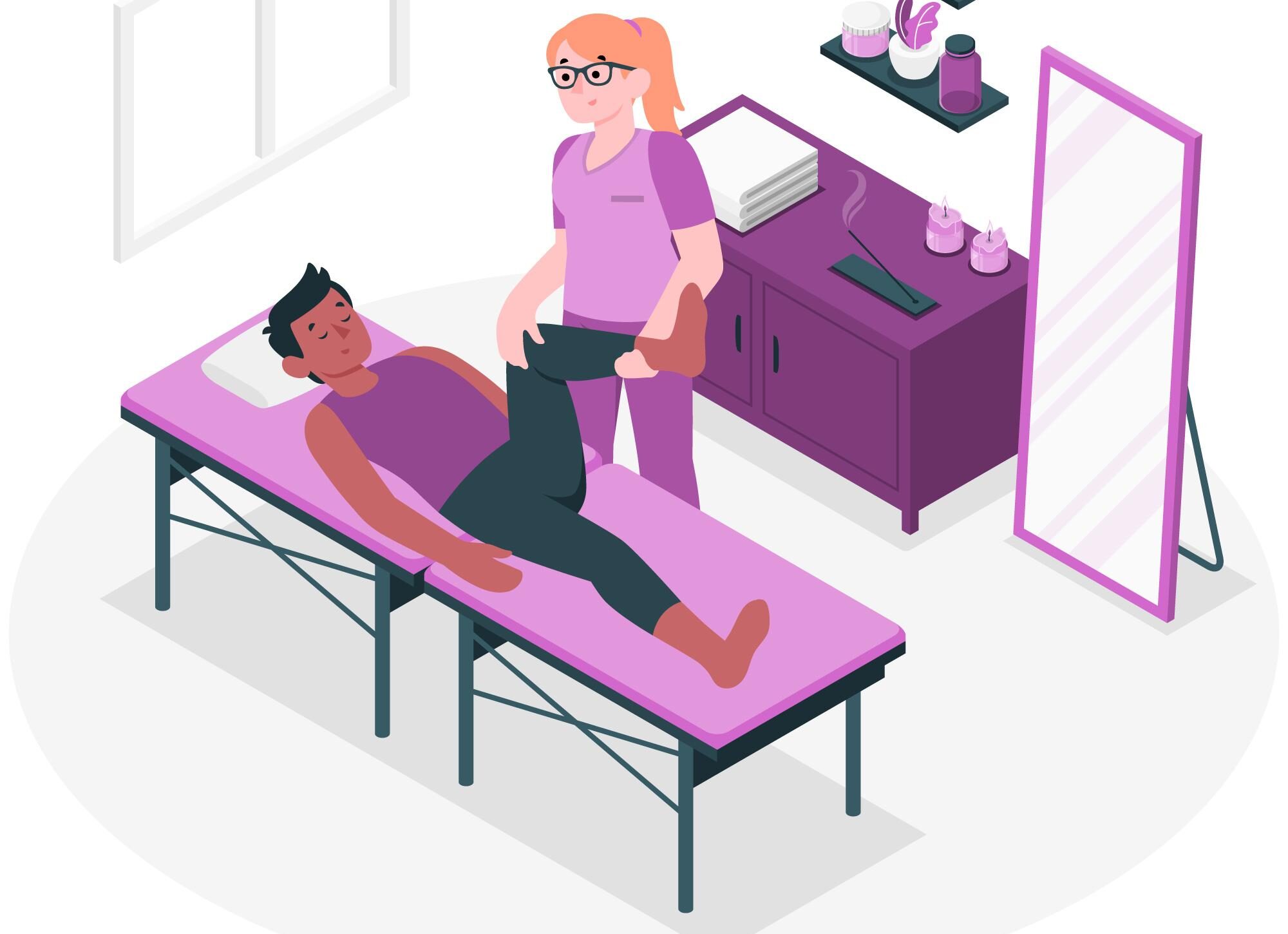Introduction: Understanding Pelvic Floor Physical Therapy
Stop me if you’ve heard this one before: You’re struggling with symptoms that are deeply personal, and often embarrassing, like urinary incontinence, pelvic pain, or post-childbirth complications. It’s affecting your day-to-day life, but finding the right solution feels overwhelming. You’ve maybe heard whispers about pelvic floor physical therapy but aren’t sure how it could help, or if it’s even right for you.
Here’s the good news: pelvic floor dysfunction is more common than you think, and the right therapy can offer incredible relief. Pelvic floor physical therapy is designed to treat these issues, helping people like you regain control and live more comfortably.
In this blog, you’ll learn everything you need to know about pelvic floor physical therapy—what it is, how it works, and how it can improve your quality of life.
What is Pelvic Floor Physical Therapy?
Pelvic floor physical therapy is a specialised form of physiotherapy that focuses on strengthening and rehabilitating the muscles of the pelvic floor. The pelvic floor is a group of muscles that supports essential organs like the bladder, uterus (in women), and rectum. These muscles play a vital role in controlling bladder and bowel movements, supporting sexual function, and maintaining stability in your core.
When the pelvic floor muscles are too weak, too tight, or not working in harmony, it can lead to a range of issues—like incontinence, chronic pain, and even discomfort during sex. Pelvic floor physical therapy helps to correct these dysfunctions by using targeted exercises, manual therapy, and other techniques to restore balance and strength to the pelvic area.
Common Conditions Treated by Pelvic Floor Therapy
Pelvic floor physical therapy can be highly effective for a range of conditions. Here are some of the most common issues it treats:
-
Urinary Incontinence
This is one of the most common conditions treated by pelvic floor therapy. Incontinence can range from occasional leaks when you cough or sneeze (stress incontinence) to a sudden, intense need to urinate (urge incontinence). Strengthening the pelvic floor can help regain control over bladder function.
-
Pelvic Pain
Chronic pelvic pain can be caused by a variety of factors, from muscle tightness to scar tissue. Many patients feel sharp, aching pain in the lower abdomen, groin, or hips. Pelvic floor therapy can help relax tight muscles, release trigger points, and reduce pain over time.
3.Postpartum Recovery
After childbirth, many women experience weakened pelvic floor muscles, leading to symptoms like incontinence or pelvic organ prolapse. Pelvic floor therapy is often recommended to help new mothers recover their strength and prevent long-term issues.
-
Pelvic Organ Prolapse
This condition occurs when one or more of the pelvic organs (like the bladder or uterus) drop into the vaginal canal due to weakened pelvic muscles. Pelvic floor therapy can help improve muscle support and reduce symptoms.
-
Painful Intercourse (Dyspareunia)
Pain during or after intercourse is often linked to tight or overactive pelvic floor muscles. Therapy can help stretch and relax these muscles, making sex more comfortable.
-
Post-Surgical Rehabilitation
For men, particularly after prostate surgery, pelvic floor therapy can assist in regaining bladder control and relieving post-surgical complications.
How Does Pelvic Floor Therapy Work?
Pelvic floor physical therapy involves a variety of techniques tailored to each individual’s condition. Here’s a step-by-step breakdown of what you can expect:
-
Initial Assessment
The first session typically starts with a thorough evaluation. The therapist will take a detailed medical history and ask about your symptoms, daily habits, and how they affect your life. They may also assess your posture, breathing patterns, and core strength, as these factors often impact pelvic floor health.
-
Manual Therapy
Manual therapy involves the therapist using their hands to assess and treat pelvic floor muscles. This can include internal and external techniques to stretch, massage, or release tension in the muscles. Don’t worry—your therapist will explain everything beforehand, ensuring you’re comfortable throughout the process.
-
Pelvic Floor Exercises
You’ll learn specific exercises designed to either strengthen or relax your pelvic floor muscles. These exercises, commonly known as Kegels, focus on contracting and relaxing the muscles in a controlled manner. Your therapist might also incorporate other exercises to improve your posture, core strength, and breathing.
-
Biofeedback
Biofeedback is a technique where sensors are placed on your body to measure muscle activity. This helps you see how your pelvic floor muscles are working, providing instant feedback on whether you’re correctly contracting or relaxing them.
-
Education
A key part of pelvic floor therapy is learning about your body and how it functions. Your therapist will guide you through lifestyle changes—like adjusting how you lift heavy objects or improving bladder habits—that can support your recovery.
-
Relaxation Techniques
For some people, tight or overactive pelvic floor muscles are the main problem. In these cases, therapy might include relaxation exercises, deep breathing, or stretching routines to help calm the muscles.
What to Expect During Your First Session
Walking into a pelvic floor therapy session for the first time can feel daunting, but understanding what happens can help ease any concerns. Here’s what you can typically expect:
-
Discussion of Symptoms
Your first session will begin with a conversation. The therapist will ask about your symptoms, medical history, lifestyle, and any past treatments you’ve tried. This is your opportunity to discuss anything that’s been bothering you, no matter how personal it may seem—remember, your therapist is trained to deal with these sensitive topics.
-
Physical Examination
Next, the therapist will likely perform a physical assessment. This might involve an internal pelvic exam, which is a standard part of pelvic floor therapy to assess muscle strength, coordination, and tightness. The examination may also include looking at your posture, back, and core muscles to understand how these factors contribute to your pelvic health.
-
Customised Treatment Plan
Based on the assessment, your therapist will create a personalised treatment plan tailored to your specific needs. This could involve a combination of exercises, manual therapy, and lifestyle adjustments. The therapist will explain each element of your treatment, ensuring you feel informed and confident moving forward.
-
Addressing Any Fears or Concerns
If you’re feeling nervous about any aspect of the therapy, now is the time to ask questions. Whether it’s about discomfort during an exam or what long-term recovery might look like, your therapist is there to address your concerns and make you feel as comfortable as possible.
How Long Does It Take to See Results?
Recovery times can vary depending on the condition being treated and the severity of symptoms. However, most people begin to notice improvements within a few weeks of starting pelvic floor therapy. Here’s a general timeline to help set expectations:
-
Early Progress (Weeks 1–4)
In the first few weeks, you may start to feel subtle improvements. This might include better muscle control, less frequent leaks, or reduced discomfort. Keep in mind that progress may be slow at first, as your body adjusts to the exercises and techniques.
-
Noticeable Changes (Weeks 4–8)
Around the one- to two-month mark, many patients report more noticeable changes. This could be a reduction in pain, greater confidence in bladder control, or less tension in the pelvic area. If you’re consistent with your exercises and following your therapist’s guidance, this is when you’ll likely start seeing more tangible results.
-
Long-Term Recovery (3–6 Months)
For long-term or chronic conditions, full recovery may take a few months. The key is persistence—continuing your exercises at home and attending therapy sessions regularly. Over time, you’ll likely notice significant improvements in your overall pelvic health and a better quality of life.
Ongoing Maintenance
Once you’ve achieved your therapy goals, you may only need occasional follow-ups to maintain the progress you’ve made. Some patients continue with the recommended exercises as part of their daily routine to prevent future problems.
The Benefits of Pelvic Floor Therapy
Pelvic floor therapy offers a wide range of benefits that can dramatically improve both physical health and quality of life. Here’s how it can help:
-
Improved Bladder and Bowel Control
Pelvic floor therapy is highly effective in managing urinary incontinence and bowel issues. By strengthening or relaxing the pelvic floor muscles, you can regain better control over these functions, reducing leaks, urgency, or frequency.
-
Reduced Pelvic Pain
If you’ve been suffering from chronic pelvic pain, therapy can help identify the underlying cause and provide relief. Techniques like manual therapy and relaxation exercises target muscle tension and tightness, often reducing pain and discomfort significantly.
-
Enhanced Postpartum Recovery
For women recovering after childbirth, pelvic floor therapy helps restore muscle strength and address common postpartum issues like incontinence or prolapse. This support is crucial for long-term health and prevention of further complications.
-
Better Sexual Function
Pelvic floor dysfunction can lead to painful intercourse or other sexual health issues. Therapy helps relax tight muscles or strengthen weak ones, improving overall comfort and sexual function, allowing for a more fulfilling experience.
-
Boosted Confidence and Quality of Life
Dealing with pelvic floor dysfunction can affect your confidence and daily life. Whether it’s the embarrassment of incontinence or chronic discomfort, these issues can be stressful and isolating. By addressing the root cause through therapy, many people find that their confidence returns, and they can enjoy a fuller, more active life.
Final Thoughts: Why You Shouldn’t Wait to Get Help
Pelvic floor dysfunction is more common than you think, and the sooner you seek treatment, the faster you’ll experience relief. Whether you’re struggling with incontinence, chronic pelvic pain, or postpartum recovery, pelvic floor physical therapy offers a proven way to regain control and improve your quality of life.
Don’t let embarrassment or uncertainty stop you from seeking the help you need. Pelvic floor therapy is a personalised, effective treatment that can restore your confidence, eliminate pain, and help you take back control of your body. If you’re experiencing any symptoms related to pelvic health, now is the time to act. You deserve to feel comfortable and confident in your everyday life.




